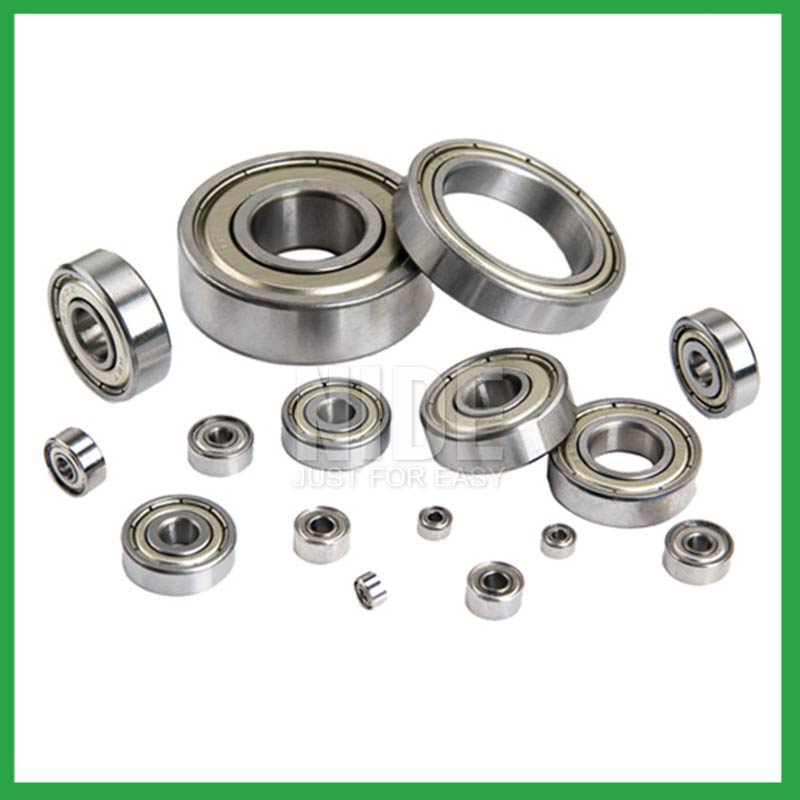Ball bearings are mechanical components that are designed to reduce friction between moving parts and ensure smooth operation in a wide range of machinery and equipment. They are widely used in various industries, including automotive, aerospace, manufacturing, and more. Let's delve deeper into the world of ball bearings to understand their structure, types, and applications.
Structure of Ball Bearings
Ball bearings are made up of several components that work together to enable their function. The three main parts of a ball bearing are the outer ring, inner ring, and rolling balls. The outer and inner rings are both hardened and polished to ensure smooth movement and durability. The rolling balls, which are responsible for reducing friction, are typically made of steel, ceramic, or other specialized materials.
Types of Ball Bearings
There are several types of ball bearings, each designed for specific applications. Here are some of the most common ones:
1. Deep-groove Ball Bearings: These are the most widely used ball bearings, featuring deep raceway grooves on the rings to accommodate high radial loads and moderate axial loads.
2. Angular Contact Ball Bearings: As the name suggests, these bearings can accommodate both radial and axial loads in one direction. They feature a contact angle between the rings, allowing them to handle higher thrust loads.
3. Self-aligning Ball Bearings: These bearings are designed to compensate for any misalignment between the shaft and housing, making them ideal for applications with shaft deflection or misaligned shafts.
4. Thrust Ball Bearings: As the name implies, these bearings are designed to handle thrust loads and are often used in applications involving heavy axial loads, such as automotive transmissions.
5. Miniature and Instrument Ball Bearings: These bearings are small in size and are primarily used in precision instruments and miniaturized devices.
Applications of Ball Bearings
Ball bearings are widely used in various industries for their ability to reduce friction and ensure smooth operation. Some of their common applications include:
1. Automotive Industry: Ball bearings are a crucial component in automotive applications, including engines, transmissions, and suspension systems.
2. Aerospace Industry: In the aerospace industry, ball bearings are used in aircraft engines, landing gears, and various other critical applications.
3. Industrial Machinery: In industrial machinery, ball bearings are used in motors, pumps, turbines, and other equipment to ensure smooth operation and reduce wear and tear.
4. Medical Equipment: The precision and smooth operation of ball bearings make them ideal for use in various medical equipment, such as x-ray machines, MRI scanners, and surgical instruments.
5. Robotics: Ball bearings are widely used in the joints and moving parts of robots to enable smooth and precise movements.
Advantages of Ball Bearings
1. Reduced Friction: Ball bearings are designed to reduce friction between moving parts, which not only ensures smooth operation but also increases the lifespan of the equipment.
2. High Load Capacity: Ball bearings can handle both radial and axial loads, making them suitable for a wide range of applications.
3. Low Maintenance: Due to their durability and ability to operate smoothly, ball bearings require minimal maintenance, saving time and cost for industries.
4. Wide Range of Sizes and Materials: Ball bearings come in a variety of sizes and can be made from different materials, allowing them to be customized for specific applications.
Ningbo Haishu Nide International Co., Ltd is a professional bearing manufacturer and distributor. We were founded in 2010 and have been engaged in the bearing industry for 13 years. Our company specializes in producing carbon brush,magnet,thermal protector,fan,ball bearing,motor cover and lamination,insulation paper and other products. Meanwhile, we have a good cooperative relationship with world-renowned bearing manufacturers.
Nide team could manufacture ball bearing as per customer’s drawing and samples. If customer only has samples, we could also design drawing for our customer. We also provide customized service.Our goal is to help customers reduce tedious purchasing pressures while obtaining high-quality products. Nide hopes to provide one-stop motor manufacturing services to global customers.
FAQs Guide:
Q: What is the most common material used in bearings?
A: The most common material used to produce the load carrying components in precision ball bearings, roller bearings, and tapered roller bearings is 52100 chrome steel. These components are the bearings inner and outer rings, balls and rollers.
Q: How do different ball bearing designs, such as deep groove, angular contact, or thrust bearings, cater to specific applications?
A: Deep groove : Deep groove ball bearings are the most common type. They can handle both radial and axial loads. Angular contact ball bearings: Angular contact ball bearings have higher than average internal axial clearance. They can handle axial loads in one direction and moderate radial loads.
Q: Do it come in various tolerance classes?
A: Bearing tolerances are standardized by classifying bearings into the following six classes (accuracy in tolerances becomes higher in the order described): 0, 6X, 6, 5, 4 and 2.
Q: Are there ceramic bearings designed for specific applications requiring high-temperature or corrosion resistance?
A: Ceramic bearings are a special type of bearing made of ceramic materials, offering superior wear resistance, corrosion resistance, and high-temperature performance. They provide excellent performance in applications requiring high speeds, high temperatures, and resistance to corrosion.
Q: What are the standard sizes and dimensions of ball bearing?
A: The size charts are widely available, and can be used to find the measurements of a specific bearing. Series 6200 and 6300 are the most commonly used, and typically range from 10 x 30 x 9 mm (0.394 x 1.181 x 0.354 in) to 150 x 320 x 65 mm (5.906 x 12.598 x 2.559 in).
Q: What about the lead time?
A: 3-7 days for samples, 3-4 weeks for mass production.
